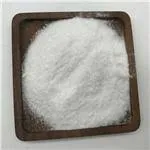Sodium Thiocyanate Solution Properties, Applications, and Safety
Sodium thiocyanate (NaSCN) is an inorganic compound that plays a crucial role in various fields, including chemistry, biology, and industry. As a colorless or white crystalline solid that is highly soluble in water, sodium thiocyanate forms a clear solution, which is widely utilized in laboratory settings and industrial processes.
Physical and Chemical Properties
Sodium thiocyanate has a molecular weight of 81.07 g/mol and is characterized by its hygroscopic nature, meaning it can absorb moisture from the air. When dissolved in water, it dissociates into sodium ions (Na+) and thiocyanate ions (SCN-). This ionic dissociation contributes to its high solubility and allows for its diverse applications. The solution has a high ionic strength, which affects its behavior in chemical reactions, making it an ideal medium for various analytical techniques.
Preparation of Sodium Thiocyanate Solution
Preparation of sodium thiocyanate solution typically involves dissolving the solid salt in distilled water. The concentration of the solution can be adjusted based on specific experimental requirements. Common concentrations used in laboratories range from 0.1 M to 2 M, allowing researchers to conduct a variety of experiments while controlling the reactivity and interactions of the solution.
Applications
Sodium thiocyanate solution is utilized in numerous applications across different fields
1. Chemical Analysis In analytical chemistry, sodium thiocyanate is employed as a reagent in titrations, particularly in determining the presence of metal ions. It reacts with certain metals to form stable complexes, facilitating quantitative analysis.
sodium thiocyanate solution

2. Biochemistry Sodium thiocyanate functions as a protein denaturant and culture media supplement. In molecular biology, it can be used to lyse cells, enabling researchers to extract proteins and nucleic acids for further study.
3. Pharmaceutical Industry The compound is used in the synthesis of various pharmaceuticals, including medications for treating thyroid disorders. It is known to inhibit the uptake of iodine in the thyroid gland, thus influencing hormone production.
4. Agriculture Sodium thiocyanate acts as a fertilizer agent and can be useful in pest control. Its application in agriculture enhances the soil’s nutrient profile and can deter certain pests.
5. Industrial Applications In the textile and paper industries, sodium thiocyanate is involved in dyeing processes, acting as a dye fixative. It is also used in the production of plastics and various chemical intermediates.
Safety and Handling
While sodium thiocyanate is relatively safe when handled properly, there are essential safety considerations to keep in mind. It can pose health risks if ingested, inhaled, or in prolonged contact with skin. The compound should be stored in a cool, dry place away from incompatible substances, particularly strong acids. Personal protective equipment (PPE) such as gloves, goggles, and lab coats should be worn when working with sodium thiocyanate solutions.
In case of exposure, it is important to follow safety protocols, including rinsing skin with water or seeking medical attention if symptoms persist. Additionally, proper waste disposal methods should be adhered to in order to minimize environmental impact.
Conclusion
Sodium thiocyanate solution is a versatile compound with significant applications in chemistry, biochemistry, agriculture, and industry. Its unique properties facilitate diverse uses, making it a valuable substance in both research and commercial settings. Awareness of its handling and safety measures ensures that its benefits can be harnessed effectively and responsibly.

